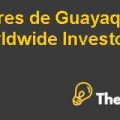BOSTON PHYSICIANS DEVICES Case Study Solution
Abstract:
Boston Physician Devices is a medical equipment manufacturer in the USA. Boston spends heavily on its research and development, which is the primary reason for its regular growth and popularity. Due to continuously evolving medical market, and to address the growing demand of consumers John Gruber, the Chief Executive Officer (CEO) of Boston has decided to add another manufacturing plant, so that rapid demand could be answered with rapid supply. And to finance such addition, Gruber has planned to make a new proposal to its current lender, Great New England Bank
However, Gruber has realized that Boston’s current line of credit is about to reach its limit of US $11 million and for extension of the credit limit, Gruber needs to convince Rex Doge, vice president of Great New England Bank (GNEB). The purpose of this report is to provide John Gruber with facts that can be used for negotiating the extension.
Boston Financial Position:
Liquidity Status:
Boston’s Current Ratio of 1.28 and Quick Ratio of 0.56, indicates that Boston is incapable of management its day to day operations and it will very likely fall under short-termcrises if its short-term creditors demanded an early settlement. However, this is not the true picture. The reason for low liquidity ratios is the result of putting credit line of credit under current liabilities, which is an accurate treatment.
Profitability:
The profitability ratios show that Boston’s Gross Profit Margin (GPM) and Net Profit Margin (NPM) are both at an increasing trend, with the constant growth of 54% and 3% respectively. Furthermore, the Return on asset (ROA) of 5% tells us how efficiently Boston is using its Assets, and 17% Return on Equity is probably making its investors happy.
Gearing:
Gearing is the risk of caused by higher debts. It is the most real factor for creditors, as loan providers avoid giving loans to already high geared companies. Boston’s debts are equal to 70% of its equities, which means that Gruber still has aroom of 30% to bring debt at thelevel of equity.This increases the chances of Boston for successfully negotiating credit terms.
Another factor of gearing is the ratio of interest coverage, which is currentlythree times of EBIT. Hence Boston’s ability to cover its interest and capacity to accept loan are both plus points.
Growth:
Boston’s sales grow at an average rate of 50%, which indicates that with every passing year, Boston is becoming more and more popular among customer markets, and doubling the production will result in even higher growth rate.
Projections:
With the addition of the new manufacturing plant, Boston is expected to raise its sales figure from the US $32 million in 2010 to the US $45 million in 2011 which is further expected to grow to the US $61 million in 2012. For smooth operations, Boston requires an average working capital input of 28% of its sales, which is financed through aline of credit debt.
It is expected that for the upcoming two years, Boston will need thefinancial support of approximately US $31.7 million, out of which 13.5 will be needed in 2011 and US $18.2 in 2012. Boston has agreed to receive the new debt on 10% interest rate which is higher than theaverage interest rate of 9% in current year.
Thus GNEB will very likely accept the proposal of granting anew loan, to benefit itself with higher interest and to maintain its relationship with Boston.....................
This is just a sample partial work. Please place the order on the website to get your own originally done case solution.












